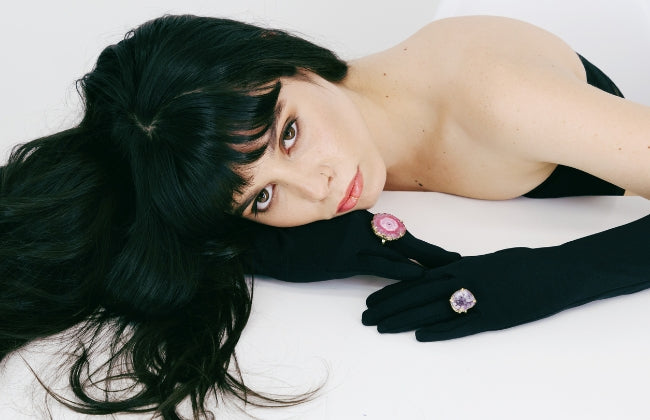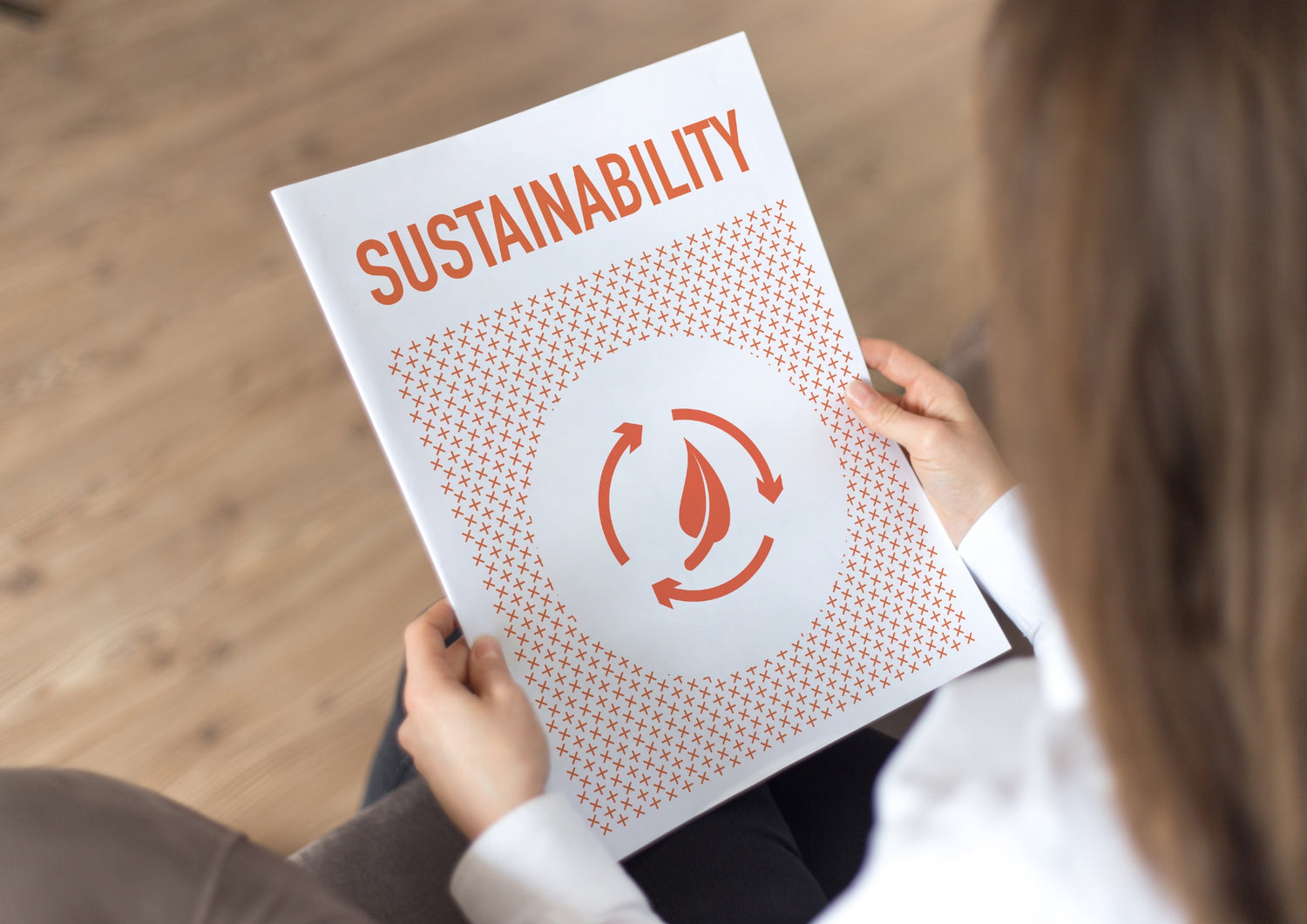Many products claim they’re sustainable, but can you say that if you’re only 50% or 75% there? Hint: it’s about a LOT more than packaging.
I recently had the honour of participating in the Nutricosmetics 2023: Sustainable Beauty Inside Out webinar. As a small South African brand, I was in serious company with the likes of Firdevs Dursun, Marketing Manager at Florêve Paris, Ute Wollenweber, CEO and Founder at Care-and-Science, Primož Artač, CEO and Founder at TOSLA Nutricosmetics, and Chris DeArmitt, President at Phantom Plastics to name a few.
Our goal? To discuss the possibility of 100% sustainable nutricosmetic products. What do I mean by 100% sustainable? The keyword is ‘lifecycle’ – in order to be completely sustainable, you have to look at a product from inception (sourcing) through to packaging, sales, and finally, recycling – in other words, the entire lifecycle of the item.
When looking at sustainability like that, it’s clear that it would take a lot of time, effort, and cost to make a product genuinely sustainable. In most cases, the best you’ll likely get is ‘mostly or partly sustainable’; for example, the sourcing could be done sustainably (think fair trade cacao, for example), but then your product needs to be wrapped in some plastic to keep it fresh. You win here, and you lose there.
So, over four sessions, the panellists discussed Rules and Regulations: a look at sustainability and efficacy claims for edible beauty, Functional Beauty: a life-cycle approach to eco and ethical nutricosmetics, Supply-Side Supplements: an exploration of the production, packaging, and labelling solutions, and Planet-Friendly: a reassessment of material science for sustainable beauty.
These are essential conversations as nutricosmetics may be the new kid on the block. Yet, it’s a very successful one - the nutricosmetics market size is estimated at $8.09 billion in 2023 and is expected to reach $11.91 billion by 2028, according to Mordor Intelligence.
What do we mean when we talk about sustainability?
Before returning to nutricosmetics, let’s look at sustainability and its requirements. More than anything else, it’s about being informed and intentional.
The Enel Group gives us a good idea of the concept of sustainability and its three pillars:
When we talk about sustainability, we’re talking about a development model that can meet the needs of the present without compromising the ability of future generations to meet their own. It’s a holistic approach that considers the social, environmental and economic impacts of today's actions and decisions on tomorrow.
From a historical perspective, the concept of sustainability was formulated at the first United Nations Conference on the Environment in 1972. Still, it has only really taken shape since 1987, when the publication of the so-called Brundtland Report ("Our Common Future") clarified sustainable development goals.
The same report introduced the three pillars or principles of environmental, social and economic sustainability, also known as ESG (Environmental, Social, Governance).
As you can see, the concept of sustainability is multi-faceted. It’s social, environmental, and economic = and must be 360 to be truly sustainable.
It’s a lot of work to make it work, or is it?
Making a product lifecycle sustainable is hard work. It requires a lot of research, testing, and trialling. I believe that the smaller indie brands champion this entire movement. The massive multi-billion-dollar brands put it into their business strategy, so that over the next 5 or 10 or 20 years, they're working on being, you know, 50% or 80% sustainable.
I think it's pretty exciting, and I think there's more opportunity for smaller indie brands to be successful because they can be agile and pivot quickly without costing too much. They can be more experimental with their packaging, ingredients, and marketing campaigns because all this bureaucracy does not bog them down as it can the multinationals.
It's almost like the bigger brands have been watching the marketplace, and now they're going to copycat everyone, which seems a little bit disingenuous.
Remember when I said sustainability is about being intentional; well, it’s also about being informed, and that’s trickier.
Sourcing: where it all begins
In a recent post, I discussed the importance of sourcing; not only does it matter in protecting the environment, but sourcing materials that have been sustainably grown, as is the case with My Beauty Luv’s range, also results in a better final product.
I firmly believe in beginning as you mean to go on, doing your homework and starting with excellent raw materials, the sourcing of which does no, or at least the least harm possible to the environment and the people who live in it.
Sustainability needs to be regulated
I was very impressed to learn how regulated the edible beauty industry and packaging are in most of the EU. I’m not going to bore you with regulations in other countries; I can tell you there needs to be a straightforward, well-funded, top-down approach to achieve whole-scale, true sustainability.
Jennifer Carlsson, a brand expert at Mintoiro, spoke about a recent report she researched about the level of ‘greenwashing’ in the nutricosmetics industry. It’s far too easy to slap a sustainable label on a product when, in truth, it’s only somewhat sustainable.
As I’ve mentioned, and the research proves, ensuring a product is 100% sustainable is difficult. That’s okay; what’s not okay is to misrepresent your product to a customer. As Jennifer reiterated several times, don’t lie about where you are on the sustainability journey; do what you can, grow as you can, and if you’re honest, your customers will join you on the journey.
Is plastic the environmental devil we think it is?
If you’d asked me a year ago, you’d have gotten a very different response to the one you’ll get now that I’ve been exposed to the research done by Dr Chris DeArmitt. I’ll admit he can come across as a polarising figure, especially in a world that’s demonised plastics, but I cannot fault his transparency or passionate advocacy for education:
“I don’t care if people are against plastics based on the facts, but at present, people are against plastics based on clear, unsubstantiated lies. As a leading plastic materials scientist, I do not make, sell or market plastics. Furthermore, my research on this topic was all done without any funding to keep it free of bias. The website, the videos and even the book are all provided for free so that we can all start making wiser choices based on hard evidence”.
I’ve borrowed the below from his website Q&A.
Should we ban plastic bags?
No. Plastic bags are the greenest alternative (see details here). Changing to paper bags means cutting down millions more trees per year, more carbon dioxide released & generating up to 10x more waste. A lifecycle analysis professional examined all 24 studies on bags and concluded:
“From all 24 reports and reviews assessed, the actual LCA (life cycle) analyses on grocery bags overwhelmingly point to plastic as the material with least environmental impact, both at the single-use level and multi-purpose,” Neil Shackelton – Founder, Medoola
Should we switch to biodegradable materials?
No. Biodegradable plastics are less green than standard plastics, and when they degrade, they release large amounts of carbon dioxide.
Should we use more metal & glass because they are recycled faster?
No. Metal and glass are terrible for the environment. The solution is to keep increasing recycling rates for plastic, which many countries have already done.
Should we replace plastics because they create a waste problem?
No. Plastics are less than 0.5% of all waste and are proven to reduce overall waste creation, including waste going to landfills. Replacing plastics means creating 3-4x pounds (up to 1,8kg) of waste for every 0,45kg of plastic replaced.
Where to next for My Beauty Luv
Are we 100% sustainable? No. Can we ever get there? This I am also uncertain of. We know our ingredients are sustainably sourced, we try to do as little damage to the environment as possible, and we create jobs as we can. We might not be 100% sustainable, but we are a hundred per cent committed to the highest quality with the least amount of harm.





